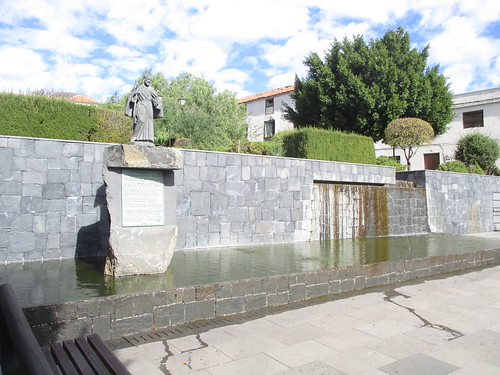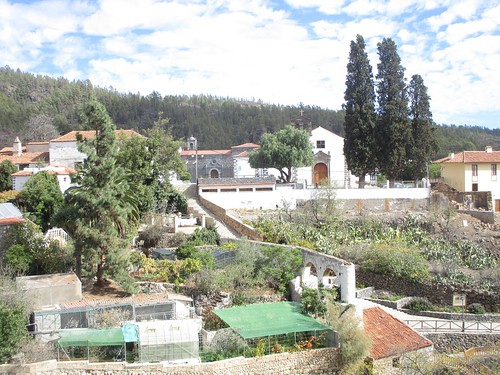
Vilaflor could make the shortest ever edition of Through The Keyh9le. The highest village in Spain doesn´t hide its pride in its favourite son, Hermano Pedro. From street names, statues, ceramic tiles, and even a modern infants school, there´s no forgetting that the Canary Islands only saint was born here. That would be enough to make Vilaflor well worth the one hour bus ride up from Los Cristianos, but I knew there were many more reasons to treat myself to a ride up through the vineyards to taste the history.



It was still reassuring to be greeted by the statue of Pedro at the entrance to Vilaflor. The air was crisp and fresh as small busy clouds formed an ever changing jigsaw against the radiant blue sky.I took the lower right hand road and was soon gazing up at the corona forest pines and the outskirts of Mount Teide National Park. Many houses displayed their allegiance to the famous former goat herder, on the tiles that told of his devotion to the needy. Sculpted hearts outside the small library drew my attention to adverts for talks about old rural skills and the desire to nurture the cultural past.



My upward stroll brought me to the vast main plaza with its water flows dropping down the green bloomed terraces. Pride of place at the top went to the church of Pedro Apostel, shining like a stunning white beacon. Inside the contrast was of dark tones and a vaulted, carved wood ceiling, and a lavish altar caught in the sunlight streaming through a high window. For a relatively small village, the church echoed with stature and nobility from the gallery of religious statues to the small touches like the dove of peace above the pulpit. Next door, a newer dark stone church occupied the site of Hermano Pedros´s former home.




Religion has always sustained the locals but water has been the life blood of day to day living. Los Lavadores at the top of the village marks the point where springs converged at a fountain. Not only did it serve as a gathering point to sustain livestock, but also the rocks were perfect places to wash and dry clothes in the sun. In recent times the site has been lovingly restored, although the water now passes further down to the modern Fuentealta bottling plant.



Veering down into the village, water also served another purpose, powering two mills where gofio, a staple part of the island diet, was ground into grain. The white arches guided the water to the mill stones and are still standing proudly. A peak into the mill house is like a peak into the past. More up to date pursuits bring visitors through the village these days. The steep TF51 road that leads up to Teide is a popular climb for cyclists, and walkers endulge in the near four hour circular walk that sweeps around the village and down to the entrance crossroads. The modern concrete mirador and cross look out over the south of Tenerife as far as El medano on the coast close to Hermano Pedros cave and shrine.


Several bodegas offer wine for tasting and sale, there are also a few hostels and the more luxurious Hotel Villalba high above the village. The touch of tourism has been light, leaving the charm and character of Vilaflor as clear as the air and the spring water.